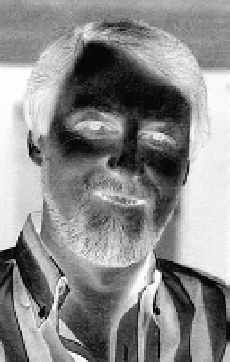Information Technology Reference
In-Depth Information
Intergalactic Digital Research, later shortened to Digital Research, was a
company set up by Gary Kildall (
B.8.7
) to market his CP/M software, an oper-
ating system for microprocessors, including personal computers. CP/M was
then the leading
disk operating system
(DOS) for computers with one or more
disk drives.
Dr. Dobb's Journal
, a magazine aimed at computer programmers,
had announced CP/M to hobbyists in 1976 as being similar to DECSYSTEM 10
in that it used commands derived from DEC's operating system software. For
example, it specified a disk drive by a letter; file names had a period and a
three-character extension; and the “DIR” command enabled the user to see the
available files in a directory. In 1977, Kildall had rewritten CP/M so that only
a small part of the software needed to be customized for each new machine.
He called this specialized code the BIOS, for Basic Input/Output System. The
BIOS standardized personal computer system software in the same way that
the Altair bus had standardized the hardware.
For reasons that are still unclear, the IBM delegation decided they could
not reach an agreement with Digital Research for CP/M and came back to
Microsoft. Their return presented Microsoft with a dilemma because the com-
pany was not at that time in the business of writing operating system soft-
ware. Concerned that the whole deal with IBM might now be in jeopardy,
Allen and Gates looked around for alternatives. A local company called Seattle
Computer Products (SCP) was producing 8086 16-bit hardware, and a designer
from SCP, Tim Paterson, had been working with Paul Allen on testing his
prototype hardware using Allen's 8086 BASIC software. As an interim mea-
sure while waiting for Gary Kildall to deliver his long-promised 16-bit version
of CP/M, Paterson had also developed a program he called QDOS, standing
for Quick and Dirty Operating System. Paul Allen and Gates then made a
deal with Rod Brock, the owner of SCP, for Microsoft to license QDOS, now
renamed 86-DOS. In July 1981, Microsoft went back to Brock and negotiated
the outright purchase of all rights to 86-DOS. This deal was probably the best
value in the history of computing and provided the foundation for Microsoft's
future success.
The IBM Boca Raton team had committed to delivering a hardware proto-
type to Microsoft “before December 1” of 1980. It was actually delivered early
in the morning of Monday, 1 December. Microsoft's business manager, Steve
Ballmer, answered the door and showed the IBM team to a small, windowless
backroom, which was kept under lock and key, with access limited to only
a handful of people. Difficulties with the unreliable hardware caused prob-
lems for Microsoft's software teams, and they missed the original mid-January
deadline for both PC-DOS and BASIC. In the end, the IBM PC, IBM's personal
computer, was announced in August 1981 and shipped ahead of schedule in
November (
Fig. 8.12
). Besides PC-DOS from Microsoft, there were two other
operating systems available - CP/M-86 from Digital Research and p-System
from the University of California, San Diego. As David Bradley said, “Simple
economics determined the winner - PC-DOS sold for about $40, while CP/M-86
and p-System were about $400.”
16
The IBM planners had estimated that “in the
five-year lifetime of the IBM PC, sales from all sources would equal 241,683
units.”
17
The corporate staff at IBM actually scolded the planners for suggesting
such unrealistically large sales volumes. In fact, according to Bradley: “Over the
B.8.7. Gary Kildall (1942-94) had a
PhD in computer science from the
University of Washington and was
teaching at the Naval Postgraduate
School in Monterey, California, when
he developed the first commercially
successful operating system for
microcomputers - Control Program
for Microcomputers or CP/M in 1974.
He and his wife then established a
company - Digital Research - to mar-
ket CP/M. IBM approached Kildall
about providing CP/M for its PC
project but for reasons that remain
obscure, Kildall and IBM were unable
to reach an agreement. IBM then
went back to Microsoft, who then
created their phenomenally success-
ful PC-DOS operating system.

Search WWH ::

Custom Search